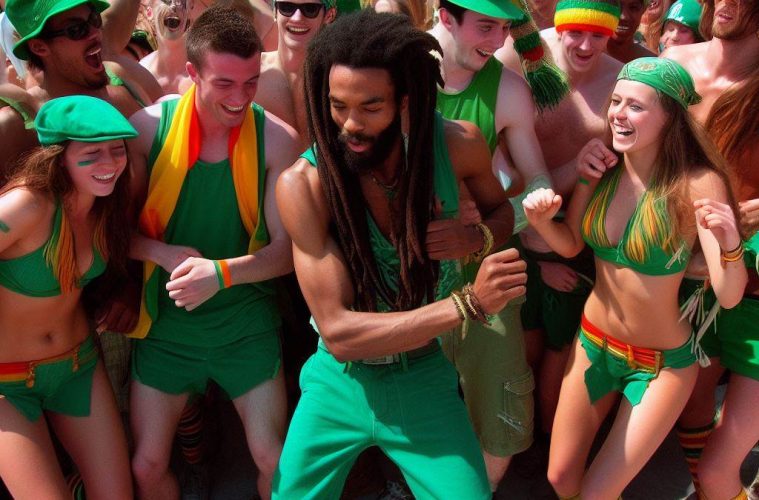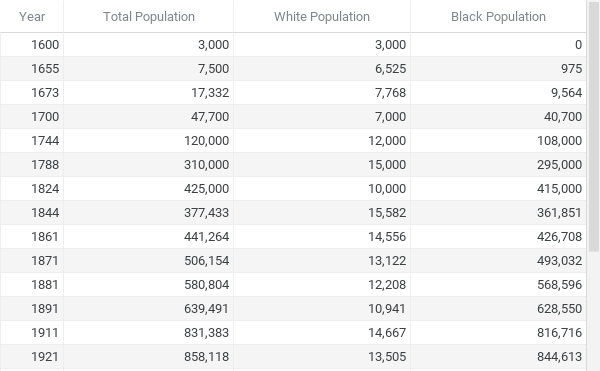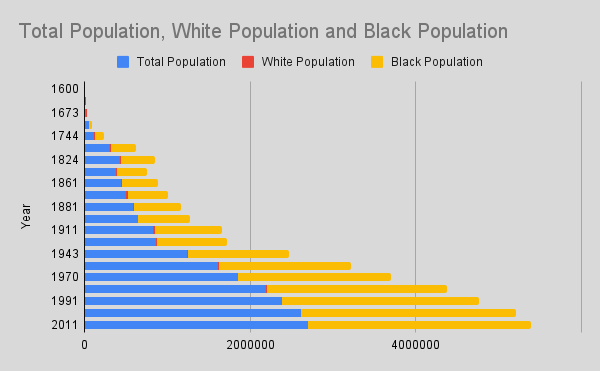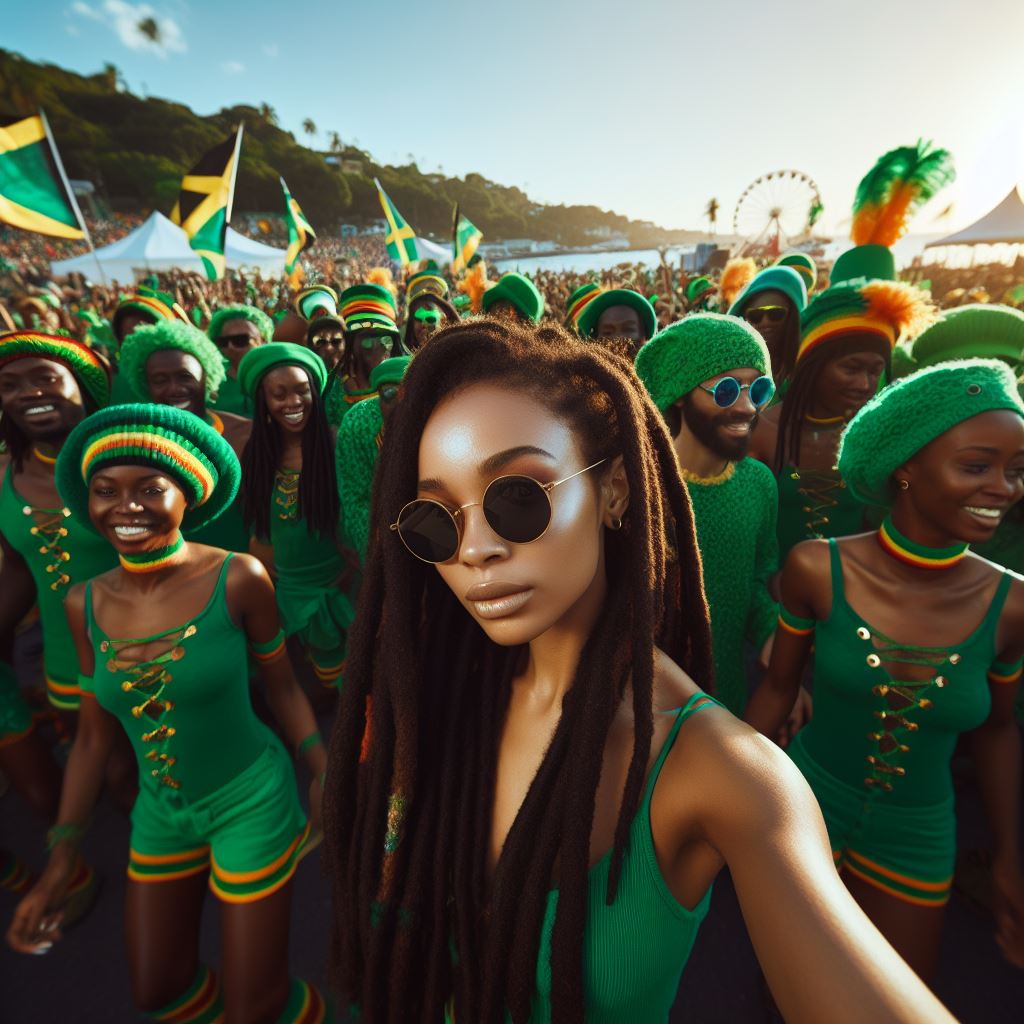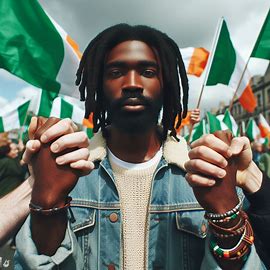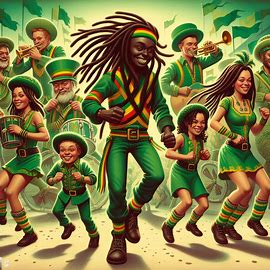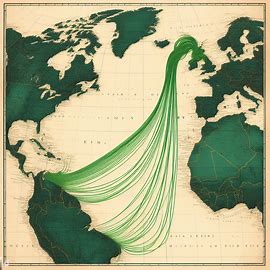Forged in Turmoil: The Intricate Tapestry of Irish Indentured Servants in Caribbean Culture
Shaping a Shared History: Ireland and Jamaica in the Colonial Era
In the colonial era, the connection between Ireland and Jamaica unfolded through a series of dynamic events that left an enduring mark on both nations.
Irish as Early Indentured Servants in the Caribbean
The arrival of Irish indentured servants in the Caribbean, including Jamaica, marks a significant chapter in the region’s history. These individuals, seeking economic opportunities or escaping political turmoil in Ireland, entered into contracts to work on plantations or in other labor-intensive roles. While their conditions were often harsh, they played a crucial role in the development of Caribbean colonies, particularly in the sugar industry.
Large Irish Presence in Early Jamaica
Jamaica, in particular, became a prominent destination for Irish migrants. The island’s fertile lands and growing plantation economy attracted a substantial Irish population, particularly during the 17th and 18th centuries. This influx of Irish individuals contributed to the island’s demographic and cultural landscape.
Intermixing Between Irish and Africans
The colonial era witnessed a degree of intermixing between Irish and African communities in Jamaica. This interaction, though complex and often marked by power imbalances, contributed to the cultural diversity of the island. The emergence of mixed-race individuals further highlights the intermingling of these two groups.
Irish Migration Fluctuates with Historical Events
The flow of Irish migration to Jamaica was influenced by various historical events. The Cromwell invasion of Ireland in the mid-17th century led to a surge of Irish migrants seeking refuge or opportunities in the Caribbean. Similarly, the Seven Years’ War (1756-1763) disrupted trade routes and caused economic hardship in Ireland, prompting some individuals to seek employment in Jamaica’s plantations.
Emergence of Irish Plantation Owners and Slave Masters
As the Irish community in Jamaica grew, some individuals gained prominence and wealth, becoming plantation owners and slave masters. This development reflects the complex and often contradictory roles played by Irish individuals in the colonial system.
Pirate Anne Bonny’s Capture in Jamaica
The capture of the notorious pirate Anne Bonny in Jamaica in 1720 adds a dramatic element to the historical narrative. Her trial and conviction in Spanish Town provide a glimpse into the legal and social dynamics of colonial Jamaica.
Irish Monopoly on Jamaica’s Legal Offices by Late 1700s
By the late 18th century, the Irish had established a strong presence in Jamaica’s legal profession. This dominance reflects the growing influence of the Irish community in various aspects of Jamaican society, including its administrative and legal structures.
According to the 2011 Census of Population and Housing for Jamaica, only 0.2% of the population identifies as White, with over half of this population living in the Saint Andrew Parish. This represents a significant decrease from the early colonial era when Irish immigrants formed a substantial portion of the White population in Jamaica.
The decline in the proportion of Irish whites in Jamaica can be attributed to several factors, including intermarriage with other ethnic groups, emigration, and changing social attitudes. Over time, the Irish community in Jamaica has become more integrated into the broader society, and many Jamaicans with Irish ancestry no longer identify as solely White.
Despite this decline, the Irish diaspora in Jamaica has left a lasting legacy on the island’s culture and identity. Irish customs and traditions have been incorporated into Jamaican life, and many Jamaicans of Irish descent continue to maintain strong ties to their ancestral homeland.
Harmony Across Horizons: 19th Century Irish Migration and Cultural Influence in Jamaica
The 19th century marked a transformative period in the relationship between Ireland and Jamaica, shaped by migration, cultural exchanges, and influential figures.
Great Famine Spurs Irish Migration to Jamaica
the Great Famine in Ireland, which lasted from 1845 to 1849, was a major catalyst for Irish migration to Jamaica. The famine, caused primarily by a potato blight that destroyed Ireland’s staple crop, resulted in widespread death, starvation, and poverty. As a result, many Irish people were forced to leave their homes in search of better opportunities and a chance to escape the harsh realities of the famine. Jamaica, with its relatively stable economy and demand for labor, became a popular destination for Irish emigrants.
The number of Irish immigrants to Jamaica increased dramatically during the famine years. According to estimates, the Irish population in Jamaica rose from around 10,000 in 1841 to over 30,000 in 1851. These Irish immigrants played a crucial role in Jamaica’s economy, working in various sectors such as agriculture, construction, and domestic service.
The impact of Irish migration on Jamaica was profound. The influx of Irish labor helped to boost the island’s economy and contribute to its development. Additionally, the Irish brought with them their own culture and traditions, which enriched the cultural tapestry of Jamaica.
Irish migration to Jamaica continued after the Great Famine, albeit at a slower pace. Over time, the Irish community in Jamaica became well-established and influential, contributing to the island’s social, economic, and cultural landscape. Today, the descendants of Irish immigrants continue to be an integral part of Jamaican society.
Introduction of Irish Potato and Seamoss Traditions
The influx of Irish immigrants to Jamaica during the Great Famine and beyond brought about a significant exchange of agricultural practices and culinary traditions. Irish immigrants, familiar with potato cultivation and the versatility of seamoss, introduced these elements to Jamaica, enriching the island’s agricultural landscape and culinary repertoire.
Prior to the arrival of Irish immigrants, potatoes were not widely cultivated in Jamaica. However, the Irish brought their knowledge and expertise in potato farming, introducing this nutritious crop to the island’s agricultural practices. Potatoes quickly gained popularity among Jamaican farmers due to their adaptability to the local climate and their ability to thrive in a variety of soil conditions.
The introduction of Irish potatoes and Seamoss traditions by Irish immigrants had a profound impact on Jamaican agriculture and cuisine. Potatoes became a staple crop, providing nutritional sustenance and enhancing agricultural diversity. Seamoss, with its versatility and nutritional benefits, enriched Jamaican cuisine and became an integral part of the island’s culinary heritage.
Seamoss became a popular ingredient in Jamaican soups, stews, and puddings. It also found its way into traditional Jamaican drinks, such as duffy and Irish moss punch. Seamoss was valued for its ability to thicken soups and stews, adding a unique texture and flavor to these dishes.
The exchange of agricultural practices and culinary traditions between Irish immigrants and Jamaicans highlights the dynamic nature of cultural interaction. It demonstrates how migration can foster the sharing of knowledge, skills, and traditions, leading to a richer and more diverse society.
Marcus Garvey Champions Irish Independence as Inspiration
Marcus Garvey, a pivotal figure in Jamaican history and a champion of Pan-Africanism, found inspiration in the Irish struggle for independence. He recognized the parallels between Ireland’s fight against British colonial rule and the aspirations of Jamaicans and other Caribbean nations to break free from colonial domination.
Marcus Garvey, born in 1887, witnessed firsthand the effects of British colonialism in Jamaica. He observed the economic disparities, social injustices, and political subjugation that plagued his homeland. Inspired by the Irish nationalist movement, Garvey believed that self-determination and economic empowerment were essential for true liberation.
Garvey drew parallels between Ireland’s cultural identity and that of African people in the diaspora. He saw the Irish struggle to preserve their language, traditions, and heritage as a reflection of the African diaspora’s own quest for cultural reclamation. He believed that African people needed to rediscover their roots and embrace their heritage to achieve true self-determination.
Garvey’s admiration for Irish nationalism extended to the tactics employed by Irish revolutionaries. He studied the methods used by Irish nationalists to challenge British authority, such as boycotts, strikes, and mass demonstrations. He believed that these tactics could be adapted to the Jamaican context to promote self-reliance and challenge colonial rule.
Garvey’s organization, the Universal Negro Improvement Association (UNIA), echoed the principles of Irish nationalism. The UNIA advocates for political independence for African nations, economic self-reliance, and cultural revitalization. Garvey’s emphasis on black pride and unity resonated with the ideals of Irish nationalism, which emphasized Irish identity and unity in the face of British rule.
Later Migrations of Irish to Jamaica Through the 20th Century
The 20th century witnessed continued migration of Irish individuals to Jamaica, adding to the rich tapestry of cultural exchange and shared traditions that had begun during the earlier waves of Irish immigration. While the numbers were not as substantial as those during the Great Famine era, the 20th-century Irish arrivals brought with them their unique perspectives, skills, and cultural contributions, further enriching the Jamaican landscape.
Post-Famine Irish Migration
The aftermath of the Great Famine saw a continued trickle of Irish immigrants to Jamaica, seeking economic opportunities and a sense of stability. These individuals, often skilled artisans, laborers, and tradespeople, found employment in various sectors, including agriculture, construction, and domestic service. They contributed to the island’s development and continued to integrate into Jamaican society.
Irish Professionals and Entrepreneurs
The 20th century also saw an influx of Irish professionals, such as teachers, doctors, and engineers, who made significant contributions to Jamaica’s social and economic development. Their expertise and knowledge enriched various fields and helped to improve the quality of life for Jamaicans. Additionally, Irish entrepreneurs established businesses and industries, contributing to Jamaica’s economic growth and diversification.
Cultural Exchange and Shared Traditions
The ongoing migration of Irish individuals to Jamaica throughout the 20th century further deepened the cultural exchange between the two countries. Irish traditions, such as music, dance, and storytelling, became interwoven with Jamaican culture, enriching the island’s cultural heritage. The Irish also embraced Jamaican customs and traditions, creating a vibrant and diverse cultural landscape.
Irish Heritage in Modern Jamaica
Today, the descendants of Irish immigrants continue to be an integral part of Jamaican society. Their contributions to the island’s social, economic, and cultural development are undeniable. Irish heritage is evident in various aspects of Jamaican life, from surnames and family traditions to culinary influences and cultural celebrations.
The 20th-century migration of Irish individuals to Jamaica stands as a testament to the enduring connection between the two countries. Their contributions have enriched Jamaica’s cultural landscape and demonstrate the power of shared traditions and cultural exchange in shaping a nation’s identity, as the Irish brought not only their resilience in the face of adversity but also a cultural legacy that continues to thrive in the vibrant tapestry of Jamaican society.
Cultural Bridges Between the Islands
The cultural bridges between Ireland and Jamaica are evident in various aspects of life, from music and language to food and literature.
Musical Links: Ska, Rocksteady, Reggae, Celtic Reggae Fusion
The vibrant musical landscape of Jamaica has been profoundly influenced by Irish musical traditions. The rhythmic patterns and melodic elements of Irish folk music found their way into Jamaican music genres like ska, rocksteady, and reggae, creating a unique fusion of Caribbean and Celtic sounds.
Ska, characterized by its offbeat guitar rhythms and walking bass line, traces its roots to Jamaican mento, which in turn drew inspiration from Irish folk music and military marches. Rocksteady, an evolution of ska, incorporated slower tempos and a heavier emphasis on bass, further showcasing the influence of Irish musical rhythms.
Reggae, the globally recognized genre of Jamaican music, also bears the mark of Irish musical traditions. The syncopated rhythms, soulful melodies, and storytelling elements of Irish music resonate in reggae’s distinctive sound.
Celtic reggae fusion, a more recent development, blends traditional Irish instruments like the fiddle, tin whistle, and bodhrán with reggae’s characteristic instrumentation and rhythms, creating a harmonious blend of two distinct musical traditions.
Irish Influences on Jamaican Language and Accent
The Jamaican language, known as Patois, has also been influenced by Irish linguistic patterns. The pronunciation of certain vowels and consonants in Jamaican Patois bears similarities to Irish accents, particularly those from the northern and western regions of Ireland.
For instance, the Jamaican pronunciation of the letter ‘a’ in words like ‘cat’ and ‘man’ is similar to the Irish pronunciation, often sounding closer to ‘eh’ or ‘ay’. Additionally, the Jamaican tendency to drop or simplify certain consonant sounds, such as the ‘h’ in words like ‘have’ and ‘house’, is also reminiscent of Irish speech patterns.
Irish Surnames, Street Names, Foods Endure as Cultural Marks
The presence of Irish surnames in Jamaica, such as Lynch, Murphy, and O’Connor, is a testament to the impact of Irish migration on the island’s demographic landscape. These surnames, passed down through generations of Irish descendants, serve as a tangible reminder of the shared history between Ireland and Jamaica.
Street names in Jamaica also reflect the Irish influence, with places like Dublin Lane, Cork Street, and Galway Drive bearing witness to the contributions of Irish immigrants. These street names serve as geographical markers of the cultural exchange that has taken place between the two countries.
Irish culinary traditions have also left their mark on Jamaican cuisine. Dishes like Irish stew, potato salad, and johnnycakes (a flatbread similar to Irish soda bread) are still enjoyed in some Jamaican households. These culinary influences highlight the intermingling of cultures and the adoption of Irish traditions in Jamaican homes.
Literature, Sports, Other Cultural Overlaps
The cultural bridges between Ireland and Jamaica extend beyond music, language, and cuisine. In literature, Irish writers like James Joyce and Seamus Heaney have been celebrated in Jamaican literary circles, while Jamaican authors like Claude McKay and Louise Bennett have found recognition in Ireland.
Sports also provide a common ground for cultural exchange between the two countries. Cricket, a sport with strong Irish roots, is widely enjoyed in Jamaica, and Jamaican athletes have excelled in international competitions, including the Olympics.
Other cultural overlaps include shared traditions in storytelling, dance, and folklore. The Irish storytelling tradition of seanchaí has parallels in Jamaican storytelling, and both cultures have a rich heritage of folk tales and legends.
The Green Thread: A Journey of Cultural Exchange and Shared Resilience
The enduring connection between Ireland and Jamaica transcends geographical boundaries, weaving a tapestry of cultural exchange and shared experiences. Despite the physical distance between the two islands, a strong sense of camaraderie and mutual respect has developed over the centuries.
The shared spirit of resilience and overcoming adversity is a defining characteristic of the relationship between Ireland and Jamaica. Both nations have experienced periods of hardship and oppression, yet they have emerged with a heightened sense of unity and determination. This shared resilience has fostered a deep-seated understanding and empathy between the two peoples.
The term “green thread” aptly captures the enduring connection between Ireland and Jamaica. This thread symbolizes the interwoven strands of culture, heritage, and shared experiences that bind the two nations together. It represents the legacy of Irish migration to Jamaica, the cultural fusion that has emerged from this exchange, and the continued dialogue and collaboration that strengthen their bond.
The “green thread” serves as a reminder that despite their geographical separation, Ireland and Jamaica are intrinsically linked through a shared history, culture, and spirit. This connection transcends borders and unites the two islands in a unique and enduring partnership.


